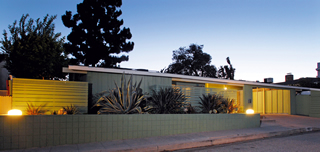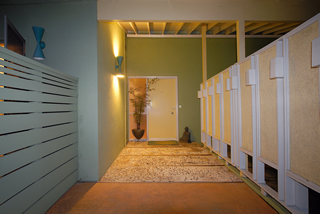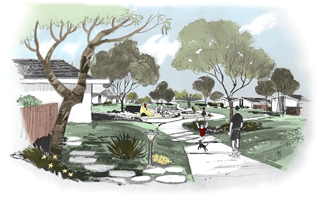Forgotten Giant - Page 2
 |
 |
 |
|
|
Compare the number of tract houses Fickett designed (50,000 or more) with the number developer Joe Eichler built using several architects (11,000), or to the number designed by Palmer & Krisel in Southern California (30,000-plus).
The comparison isn't completely fair, since many of Fickett's designs cannot be considered 'modern.' Still, many are. Fickett is clearly one of the most prolific designers of modern homes—or more or less modern homes—ever.
And housing the masses wasn't the only thing on Fickett's mind. He also produced dozens of custom homes, maybe more, many of which look nothing like his tract homes.
Fickett emerged as a model for other architects, writing in the popular and professional press about the use of glass and modern furnishings. He delivered lectures ('Designing Tomorrow's House'), and organized a speaker series for the American Institute of Architects, whose Southern California branch he presided over in 1962—the same year he spearheaded the institute's 'end ugliness' campaign.
"We feel it is the architect's duty to take an active interest in community affairs," Fickett said. He later spent 11 years on the Beverly Hills planning commission.
 |
|
|
Fickett helped reshape federal policies to ensure financing for modern homes by serving on the federal Architectural Standards Advisory Committee.
He also designed and supervised the building of well publicized 'research houses' for the 'Los Angeles Times' and Associated Architectural Publications. But unlike 'Art & Architecture' magazine's Case Study House program, these were designed to be affordable. "This is not a luxury home," the 'Times' stated.
Fickett designed restaurants, shopping centers, a circular medical office building on Sunset Boulevard, as well as hotels and resorts, and was chief designer of one of the largest buildings at one of the world's largest ports, the passenger-cargo terminal at the Port of Los Angeles, today a cruise ship terminal.




